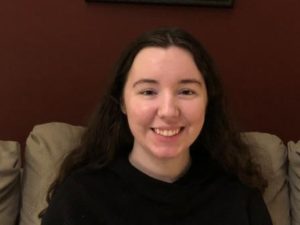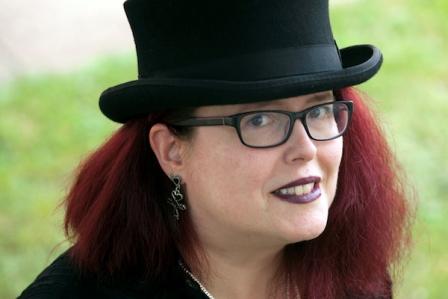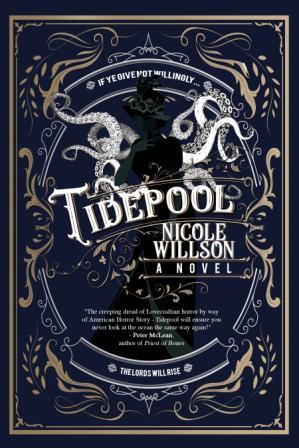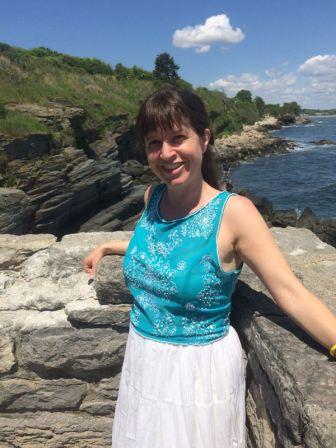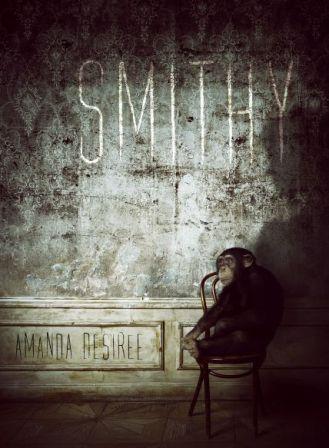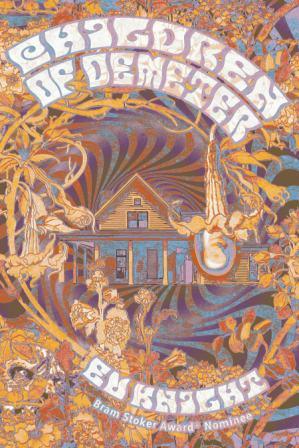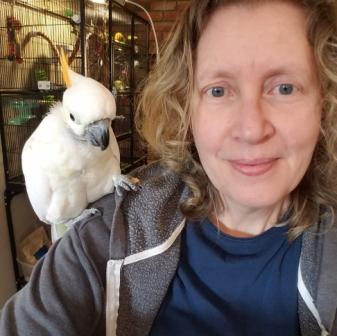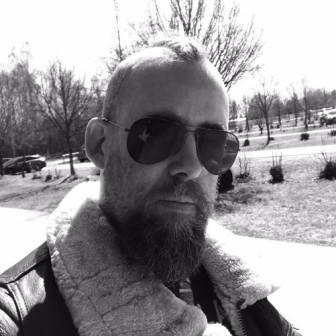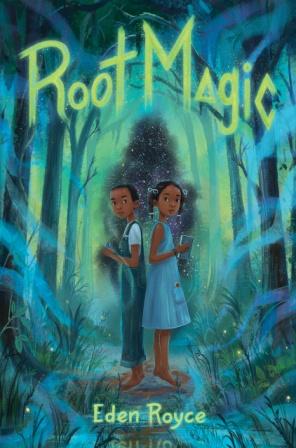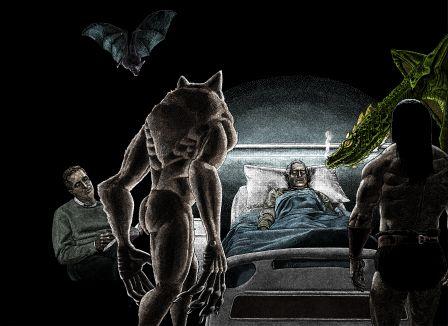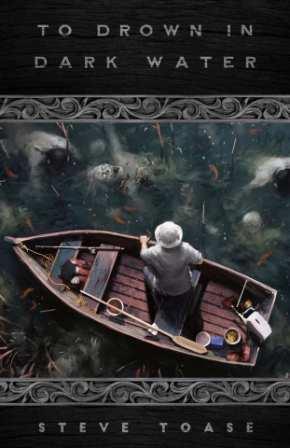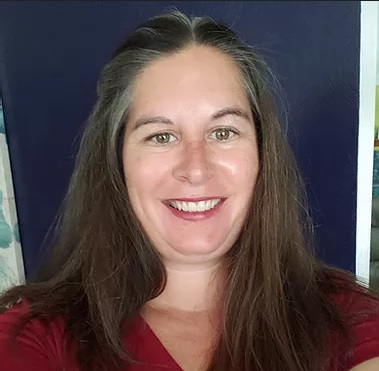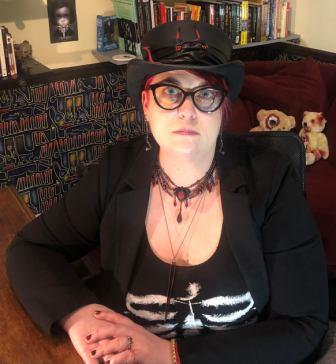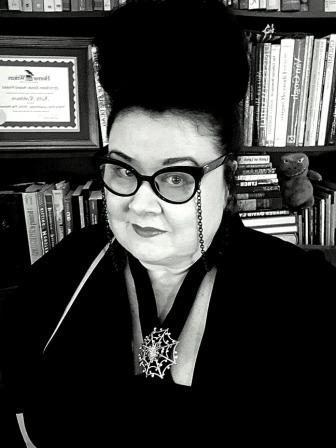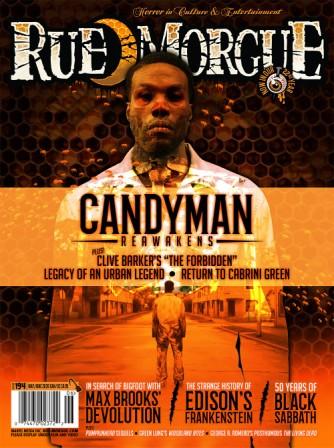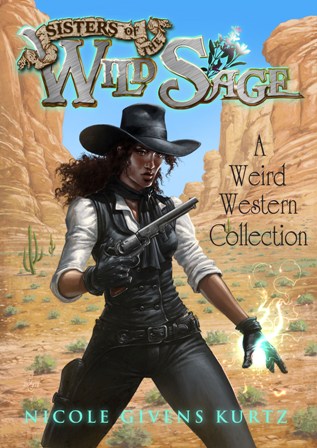Welcome back for part two in our Women in Horror Month roundtable! I’m once again talking with these eight amazing female horror authors about their love of the genre.
So let’s hand the proverbial microphone over to them!
What does Women in Horror Month mean to you personally?
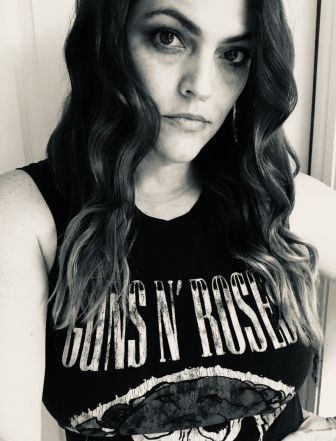 GABY TRIANA: I have a love-hate relationship with month-long celebrations. On one hand, it’s a fantastic way to highlight and introduce people to marginalized groups and authors that need more limelight, but on the other, we shouldn’t ever have to do it. Women are people just like anyone else—authors, artists, actors, directors, creatives who should be seen, read, examined, and celebrated at any time of year, just like our non-women counterparts. Same with Hispanic Heritage Month and Black History Month and Women in History Month. It’s a step in the right direction, but for me, the goal is to always be included. THAT SAID, I’m honored to be included and recognized alongside my talented peers.
GABY TRIANA: I have a love-hate relationship with month-long celebrations. On one hand, it’s a fantastic way to highlight and introduce people to marginalized groups and authors that need more limelight, but on the other, we shouldn’t ever have to do it. Women are people just like anyone else—authors, artists, actors, directors, creatives who should be seen, read, examined, and celebrated at any time of year, just like our non-women counterparts. Same with Hispanic Heritage Month and Black History Month and Women in History Month. It’s a step in the right direction, but for me, the goal is to always be included. THAT SAID, I’m honored to be included and recognized alongside my talented peers.
HYSOP MULERO: Women continuously feed horror in ways unimaginable. It’s great to have a month that not only showcases and celebrates that accomplishment, but reminds us of both how far we’ve come and the road ahead. Personally, this is so necessary as I have a tendency to consume books and anthologies (I can’t get enough of those bite size stories!) whilst unintentionally being oblivious to the authors who, what, when and otherwise. Which is fine, right? I’ll answer that. It’s okay to fall in love with a story, but it would be unwise for me to simply enjoy and buy and read without acknowledging at the very least the responsibility I have as an author, writer, and woman. To be conscious of the space I inhabit and share; To notice the beautiful progressions and the very real deficits in the horror culture and community.
EVE HARMS: There are so many badass women in horror, and it’s a lot of fun to celebrate them and be reminded of their contributions. I’m proud to be among all of these incredible ladies.
NICOLE GIVENS KURTZ: Women in Horror Month fits in perfectly with my on-going mission to amplify marginalized voices in speculative fiction, particularly horror! From Mary Shelley to Tananarive Due, women have been writing terrific horror and we continue to do so. This month puts the spotlight on us, and I love it.
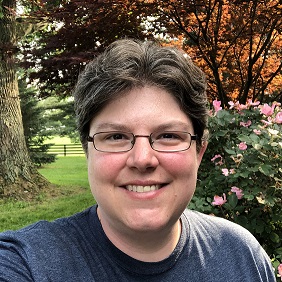 MELANIE R. ANDERSON: I think it’s great to have a month to amplify the work of all of the women creating in the horror genre now and to look at the history of women’s work in the genre, because they’ve always been there. Having a fixed time for readings and events brings awareness and can help diversify readers’ to-be-read piles. I always hope that the emphasis on women’s work during that month doesn’t go away as the next month begins. It continues for me, since much of my academic writing is on fiction by women, and I’m constantly reading for The Monster, She Wrote Podcast.
MELANIE R. ANDERSON: I think it’s great to have a month to amplify the work of all of the women creating in the horror genre now and to look at the history of women’s work in the genre, because they’ve always been there. Having a fixed time for readings and events brings awareness and can help diversify readers’ to-be-read piles. I always hope that the emphasis on women’s work during that month doesn’t go away as the next month begins. It continues for me, since much of my academic writing is on fiction by women, and I’m constantly reading for The Monster, She Wrote Podcast.
LISA KRÖGER: Women in Horror Month is a wonderful time to shine a light on women who are writing horror, but it also highlights the disparity in the genre space. Events and interviews, like this one, help readers to find their new favorite (female) writer. Unfortunately, I think the horror genre is still dominated by male creators. It’s not that the women aren’t out there—we are. It’s just that we don’t always get the attention in the public sphere. This month is a time when most horror websites and social media accounts are actively looking for and highlighting women writers—it’s wonderful.
KATHRYN E. MCGEE: Women in Horror Month is a great opportunity to acknowledge the awesome work by women horror writers. I think this month matters to me personally because I’m aware it hasn’t always been accessible for women to publish in the category of horror fiction. Even now, horror fiction by women may be called something else, relegated to other genres like dark fantasy or women’s fiction. Bringing the work of women horror writers to the forefront for a month helps raise awareness of all the fabulous creators and gives us more opportunities to grow individually and as a community. I find it inspiring every year to be able to celebrate the critical role women play in defining the genre.
LEE MURRAY: Let me start by quoting from my foreword in Daughters of Darkness, a collection of horror fiction by Aly Faye, Stephanie Ellis, Ruschelle Dillon and Theresa Derwin, which was released for Women in Horror Month 2021, and was the first ever title from Dark Angel Press, a small house dedicated solely to publishing horror women writers…
“Each February, when the horror community’s Women in Horror month rolls around, my social media feed erupts with a smorgasbord of excellent dark fiction from women authors writing gripping, suspenseful, entertaining, ground-breaking horror fiction—works like Daughters of Darkness. Yet, every year, those same posts are populated with the inevitable laments from readers who don’t see the relevance, the what-about-men folks, the why do we even need to celebrate women-in-horror people. The reason is quite simple: despite its quality, fiction written by women receives only a fraction of the attention of our male colleagues.
Danuta Kean, author of British study The Emilia Report (2019), found that women “aren’t provided with an equal platform to men upon which their work can be judged,” claiming that this is because social structures are “created in a way that militates against women being able to be recognised for their creativity.” From its very outset, the horror genre is no exception to this phenomenon, with Mary Shelley’s seminal work, Frankenstein, arguably the novel which spawned the modern horror genre, first published anonymously, albeit with a foreword by her more-famous poet husband.
This side-lining of women’s horror fiction is a trend that continues. For example, googling a ranker site for their latest results, I discovered that of the top 100 horror writers listed, only ten are women, and of those, only four are living writers [*checked again and nothing has changed]. If women horror writers aren’t rated, if they aren’t discoverable in the ‘noise’ of creative work clamouring for attention, then how are readers expected to find and enjoy their work? By extension, it seems clear that Terrence Rafferty’s observation holds true: “What can be said with certainty, though, is that women writers, even the best of them, have rarely made a career of horror, as the male luminaries of the genre mostly have.” (New York Times, 2008).
Nevertheless, women horror writers have persisted because horror writing is, in and of itself, an act of subversion. In the introduction to their Bram Stoker Award®-winning title Monster, She Wrote: The Women who Pioneered Horror and Speculative Fiction, Lisa Kröger and Melanie R. Anderson make the claim: “Women are accustomed to entering unfamiliar spaces, including territory they have been told not to enter. When writing is an off-limits act, writing one’s story becomes a form of rebellion and taking back power.” Hayleigh Donaldson highlights the barriers in her 2019 SyFy Wire article, Women Love Horror: Why Does This Surprise So Many Dudes? She writes: “So many things in life that [women] deal with daily are pretty horrifying when you think about it: the perpetual struggle against misogyny, the gaslighting by the patriarchy, menstruation and fights over reproductive control, questions over relationships, sex and marriage, the fears of child-rearing, and the smothering trappings of society-mandated femininity. Talking about any of these issues in public can be near impossible as the judgement and scorn can shut down the discourse before it’s even started. Which brings us back to Women and Horror Month…”
… a chance for me to blow kisses to all the fabulous horror sisters whose work I admire and adore, the subversive women who roll up their sleeves and create wonderful horror despite the odds being against them from the get-go. And to those wonderful souls who have kindly signal-boosted and supported my own small contribution to the genre. Women in Horror Month is a chance to applaud a dedicated sisterhood of talented creatives that has too long languished in the shadows.
What are some of your favorite horror books from the past year or two that were written by women?
GABY TRIANA: To be honest, I’ve had difficulty reading over the last year. I don’t know if it’s the pandemic, the fact that we’ve lost a few people we love, or that I don’t want to read anymore lately after a long day of writing, but my books-read count went way down in 2021. I did, however, love Queen of the Cicadas by V. Castro, Tender is the Flesh by Agustina Bazterrica, Children of Chicago by Cynthia Pelayo, and In Darkness, Shadows Breathe, by Catherine Cavendish. When a book can make my imposter syndrome flare up and make me question my own stylistic choices as an author, that’s a well-written book. 🙂
HYSOP MULERO: I’ve read so much this past year, to include a few favorites such as It Will Just Be Us by Jo Kaplan, Revelation by J.W. Munro and K.P. Kulski’s Fairest Flesh. I was first introduced to Kaplan by way of her short story “Wick’s End” published in the Haunted Nights anthology, and similarly J.W. Munro’s work, “I Speak For The Trees” published in It Calls From The Forest Volume 2. The beautiful audacity of Fairest Flesh blew me away, and as a result K.P. Kulski now resides on my “favorites” bookshelf.
EVE HARMS: Cirque Berserk by Jessica Guess, Lakewood by Megan Giddings, Earthlings by Sayaka Murata, The Worm and His Kings by Hailey Piper, to name a few.
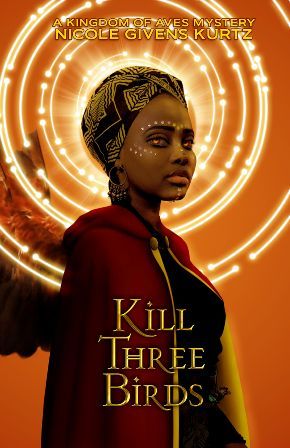 NICOLE GIVENS KURTZ: Some of my favorites from the last two years have been, Lakewood by Megan Giddings, Telecommuting by L. Marie Wood, Reenn-You by Michele Tracy Berger, Root Magic by Eden Royce.
NICOLE GIVENS KURTZ: Some of my favorites from the last two years have been, Lakewood by Megan Giddings, Telecommuting by L. Marie Wood, Reenn-You by Michele Tracy Berger, Root Magic by Eden Royce.
MELANIE R. ANDERSON: A few of my favorites by women that I’ve read in the past year or two are Silvia Moreno-Garcia’s Mexican Gothic, Darcie Little Badger’s Elatsoe, Quan Barry’s We Ride Upon Sticks, T. Kingfisher’s The Twisted Ones, and Louise Erdrich’s The Sentence, which is about a haunted bookstore and so much more.
LISA KRÖGER: I have become an absolute fan of Rachel Harrison and Julia Fine. Harrison’s book The Return is so much fun, and Fine’s The Upstairs House is a weird, terrifying look at the first months of motherhood. I also enjoyed Mona Awad’s Bunny, which is a creepy dark academia novel.
KATHRYN E. MCGEE: There are so many! I loved Lisa Quigley’s novel, The Forest, which deals with the challenges of motherhood in a folk horror context. Hailey Piper’s cosmic horror novella, The Worm and His Kings, is fascinating and mind-bending. Mackenzie Kiera’s novella, All You Need is Love and a Strong Electric Current, is an incredibly funny (and sexy) Frankenstein retelling. Tananarive Due’s, The Good House, which isn’t new in the last couple of years, but I read only recently, is an incredibly engrossing haunted house story with a perfect ending. Jessica Leonard’s novel, Antioch, is so deliciously weird and clever and exciting. Jennifer McMahon’s novel, The Drowning Kind, is immensely satisfying. Last but definitely not least, Sarah Langan’s novel, Good Neighbors, is an enthralling read about the horrors of suburbia.
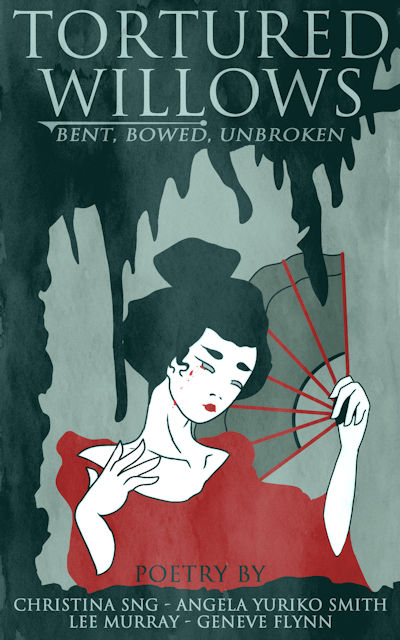 LEE MURRAY: Despite recent global calamities, our sister horror writers have been highly prolific over the past year —a testament to the power of horror to offer solace. In fact, it has been difficult to keep up with all the gorgeous writing on offer. In 2021, I published Tortured Willows, my debut horror poetry collection with Christina Sng, Geneve Flynn and Angela Yuriko Smith, while also working on my poetry collection Fox Spirit on a Distant Cloud, the subject of my Grimshaw Sargeson residency, so poetry has been a key focus of 2021 for me, and that focus has kindled an even greater interest in horror poetry than other years. Our horror sisters did not disappoint. Consider these exquisite 2021 poetry collections, for example: Monstrum Poetica by Jezzy Wolfe, Strange Nests by Jessica McHugh, Victims by Marge Simon and Mary Turzillo, Kraken Fever by Angela Yuriko Smith and Kyra Starr, and Stark Naked by Silvia Cantón Rondoni. I’ve been lucky enough to have been offered some sneak peeks at collections coming in 2022, so look out for Stephanie Ellis and Cindy O’Quinn’s fabulous Foundlings, a tribute to master poets Linda D. Addison and Alessandro Manzetti, and EF Schraeder’s gorgeously sordid Judy Garland is Not a Sunrise, also a tribute, this time to songstress Amy Winehouse. I’m delighted to appear in Black Spot Book’s upcoming Under Her Skin (edited by Lindy Ryan and Toni Miller), a stunning collection of body horror poetry by some of the world’s most acclaimed women horror poets. It’s a work which has been gaining fabulous reviews. Under Her Skin includes my poem “Shameful” which is reproduced here by kind permission of the publisher. Cover art by visual storyteller, Lynne Hansen.
LEE MURRAY: Despite recent global calamities, our sister horror writers have been highly prolific over the past year —a testament to the power of horror to offer solace. In fact, it has been difficult to keep up with all the gorgeous writing on offer. In 2021, I published Tortured Willows, my debut horror poetry collection with Christina Sng, Geneve Flynn and Angela Yuriko Smith, while also working on my poetry collection Fox Spirit on a Distant Cloud, the subject of my Grimshaw Sargeson residency, so poetry has been a key focus of 2021 for me, and that focus has kindled an even greater interest in horror poetry than other years. Our horror sisters did not disappoint. Consider these exquisite 2021 poetry collections, for example: Monstrum Poetica by Jezzy Wolfe, Strange Nests by Jessica McHugh, Victims by Marge Simon and Mary Turzillo, Kraken Fever by Angela Yuriko Smith and Kyra Starr, and Stark Naked by Silvia Cantón Rondoni. I’ve been lucky enough to have been offered some sneak peeks at collections coming in 2022, so look out for Stephanie Ellis and Cindy O’Quinn’s fabulous Foundlings, a tribute to master poets Linda D. Addison and Alessandro Manzetti, and EF Schraeder’s gorgeously sordid Judy Garland is Not a Sunrise, also a tribute, this time to songstress Amy Winehouse. I’m delighted to appear in Black Spot Book’s upcoming Under Her Skin (edited by Lindy Ryan and Toni Miller), a stunning collection of body horror poetry by some of the world’s most acclaimed women horror poets. It’s a work which has been gaining fabulous reviews. Under Her Skin includes my poem “Shameful” which is reproduced here by kind permission of the publisher. Cover art by visual storyteller, Lynne Hansen.
Shameful
By Lee Murray
he comes at me, my husband, her father
and I let him, too shackled by centuries
of quiet servitude. I am complicit in my demise
such is the resolve of dutiful daughters
my own leaking shameful down my legs
in a yellow sac of aborted hope and histrionics
bloodied organs on concrete leave a stain
I grasp at air for someone. Anyone. Spool
silent supplications into the darkness
with him hissing—you be quiet, woman!
I don’t know how I conjure her, the tree-dwelling ghost-girl
with her whip-dark hair and razored nails
and the tell-tale spike suppurating at her throat
when she steals gruesome from the shadows. I know her
from the waft of sweetly cloying frangipani
bloodied organs on concrete leave a stain
she slits him like a grapefruit with a finger
scoops still seething between her bloodied lips
stomach and spleen seasoned in their salty sauce, she shreds
his tendons. Wreaks vengeance on the pale afterbirth
she comes at me, my sister, my mother
feckless, she devours me, too.
bloodied organs on concrete leave a stain
More picks for must-read titles for 2022 include Joanne Anderton’s fiction collection, The Art of Broken Things (absolutely breath-taking prose), Tori Eldridge’s sweeping dark magic tale Dance Among the Flames, and Dana Fredsti’s fabulous cinematic supernatural romp, Hollywood Monsters. I cannot wait to see these feminist horror works fly off the shelves.
And that’s part two of our Women in Horror Month Roundtable! Join us next week for part three as we discuss these writers’ advice for new authors.
Happy reading, and happy Women in Horror Month!

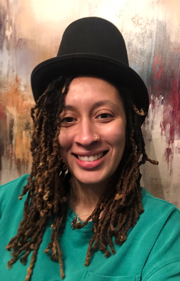
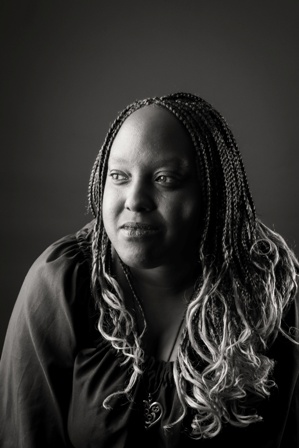
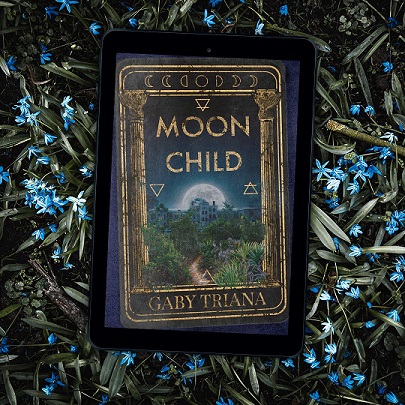
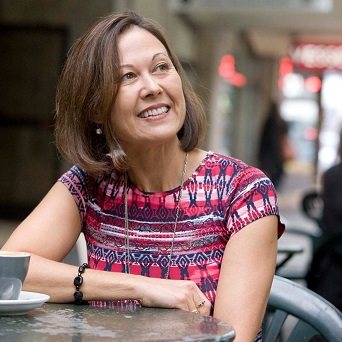
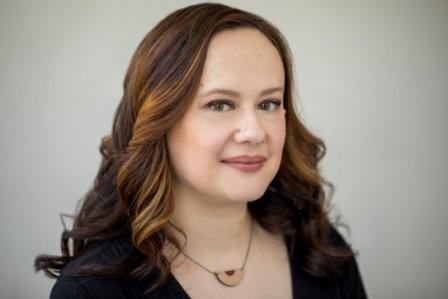
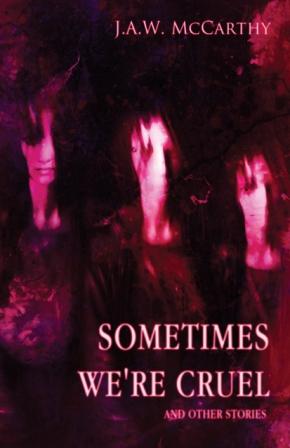
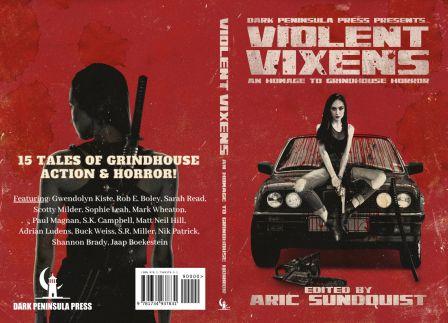
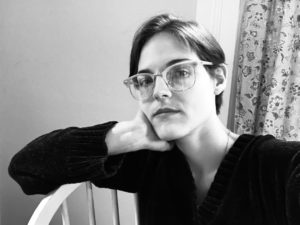
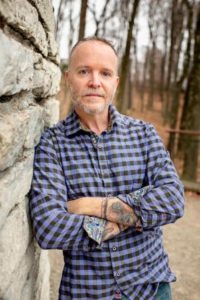
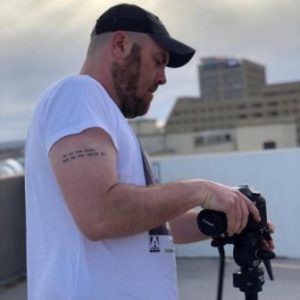 SCOTTY MILDER: “The Whole Price of Blood” is an offshoot of an idea that I’ve had for about fifteen years. The concept initially came to me when a friend was volunteering in Albuquerque as a trauma crisis advocate. It was one of those ideas that just fell into my head almost fully formed. I tried to write it as a screenplay but—for whatever reason—it never quite gelled; in particular, I just couldn’t get Abigail to come alive (so to speak). I filed it in my mental “maybe later” file, and there it sat for well over a decade until early last year, when I decided to reapproach it as a novel. That did the trick. I’m currently about three-quarters of my way into the novel, for which “The Whole Price of Blood” serves as a prequel.
SCOTTY MILDER: “The Whole Price of Blood” is an offshoot of an idea that I’ve had for about fifteen years. The concept initially came to me when a friend was volunteering in Albuquerque as a trauma crisis advocate. It was one of those ideas that just fell into my head almost fully formed. I tried to write it as a screenplay but—for whatever reason—it never quite gelled; in particular, I just couldn’t get Abigail to come alive (so to speak). I filed it in my mental “maybe later” file, and there it sat for well over a decade until early last year, when I decided to reapproach it as a novel. That did the trick. I’m currently about three-quarters of my way into the novel, for which “The Whole Price of Blood” serves as a prequel.